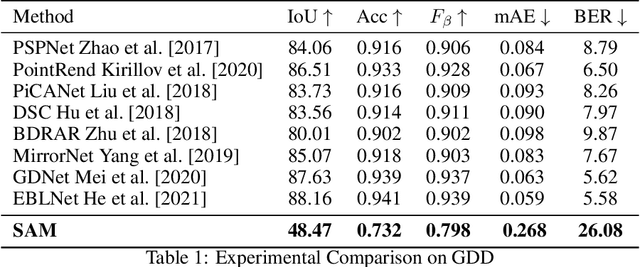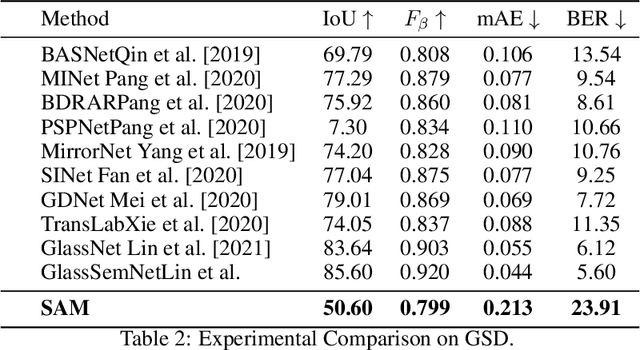Yuna Jung
Segment Anything Model Meets Glass: Mirror and Transparent Objects Cannot Be Easily Detected
Apr 29, 2023



Abstract:Meta AI Research has recently released SAM (Segment Anything Model) which is trained on a large segmentation dataset of over 1 billion masks. As a foundation model in the field of computer vision, SAM (Segment Anything Model) has gained attention for its impressive performance in generic object segmentation. Despite its strong capability in a wide range of zero-shot transfer tasks, it remains unknown whether SAM can detect things in challenging setups like transparent objects. In this work, we perform an empirical evaluation of two glass-related challenging scenarios: mirror and transparent objects. We found that SAM often fails to detect the glass in both scenarios, which raises concern for deploying the SAM in safety-critical situations that have various forms of glass.
A Survey on Graph Diffusion Models: Generative AI in Science for Molecule, Protein and Material
Apr 04, 2023



Abstract:Diffusion models have become a new SOTA generative modeling method in various fields, for which there are multiple survey works that provide an overall survey. With the number of articles on diffusion models increasing exponentially in the past few years, there is an increasing need for surveys of diffusion models on specific fields. In this work, we are committed to conducting a survey on the graph diffusion models. Even though our focus is to cover the progress of diffusion models in graphs, we first briefly summarize how other generative modeling methods are used for graphs. After that, we introduce the mechanism of diffusion models in various forms, which facilitates the discussion on the graph diffusion models. The applications of graph diffusion models mainly fall into the category of AI-generated content (AIGC) in science, for which we mainly focus on how graph diffusion models are utilized for generating molecules and proteins but also cover other cases, including materials design. Moreover, we discuss the issue of evaluating diffusion models in the graph domain and the existing challenges.
 Add to Chrome
Add to Chrome Add to Firefox
Add to Firefox Add to Edge
Add to Edge